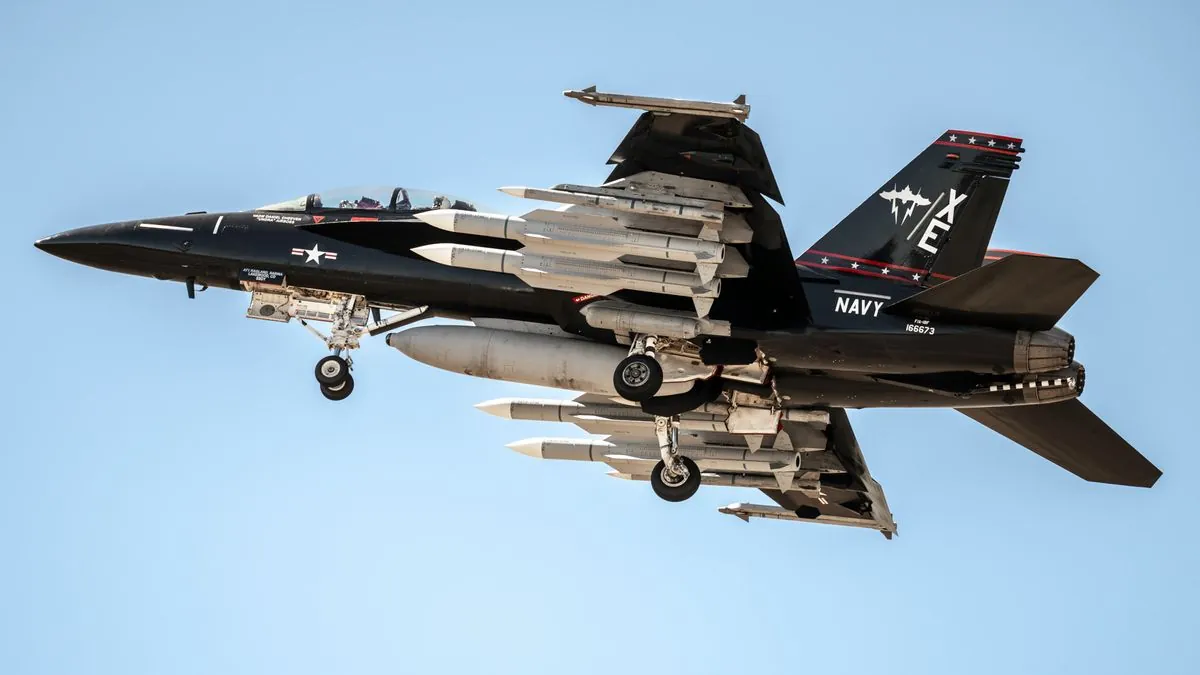The US Navy has recently unveiled a new weapon system designed to counter the growing threat of Chinese bombers. This development marks a significant shift in naval air defense strategy, reminiscent of Cold War tactics.
On September 11, 2024, a photographer captured images of an F/A-18E/F Super Hornet carrying four AIM-174B missiles during a test flight over California. This new missile, an air-launched variant of the ship-based SM-6, represents a substantial upgrade in the Navy's long-range air defense capabilities.
The AIM-174B's introduction comes in response to China's fleet of Xian H-6 bombers, which are modernized versions of the Soviet Tu-16 'Badger'. These aircraft can carry multiple anti-ship missiles, posing a significant threat to US naval assets in potential conflict scenarios.
This strategy echoes the Navy's approach during the late Cold War period. In the 1970s, the fleet deployed F-14 Tomcats armed with AIM-54 Phoenix missiles to counter Soviet bombers equipped with long-range anti-ship weapons. The Tomcat-Phoenix combination was specifically designed to engage threats before they could launch their payloads.
"Acknowledge that the outer-air battle is back. The Navy must have both long-range fighter aircraft and long-range air-to-air missiles that can pace the threat."
The AIM-174B significantly outranges the current AIM-120 AMRAAM, which has a maximum reach of about 100 miles. This extended range is crucial for engaging Chinese bombers before they can launch their anti-ship missiles, which may include subsonic, supersonic, or even ballistic variants.
While the new missile system enhances the Navy's defensive capabilities, it also presents challenges. The AIM-174B, derived from the SM-6, is a costly weapon at nearly $5 million per unit. As of 2024, the Navy had an inventory of only 850 SM-6 missiles, with plans to increase production to 300 units annually by 2028.
The limited availability of these missiles means they must be used judiciously in potential conflict scenarios. A typical carrier air wing, equipped with over 40 Super Hornets, could theoretically engage more than a hundred threats before surface ships need to employ their own defensive systems.
This development is part of a broader trend in naval warfare evolution. Since the commissioning of the first supercarrier, USS Forrestal, in 1955, the US Navy has continuously adapted to emerging threats. The introduction of the Aegis combat system in 1983 and the ongoing development of countermeasures against advanced weapons like China's DF-21D anti-ship ballistic missile demonstrate this commitment to maintaining naval superiority.
As tensions persist in regions like the South China Sea, where China commissioned its first aircraft carrier in 2012, the AIM-174B represents a critical asset in the US Navy's arsenal. However, its effectiveness in potential future conflicts will depend on strategic deployment and continued technological advancements in both offensive and defensive capabilities.
